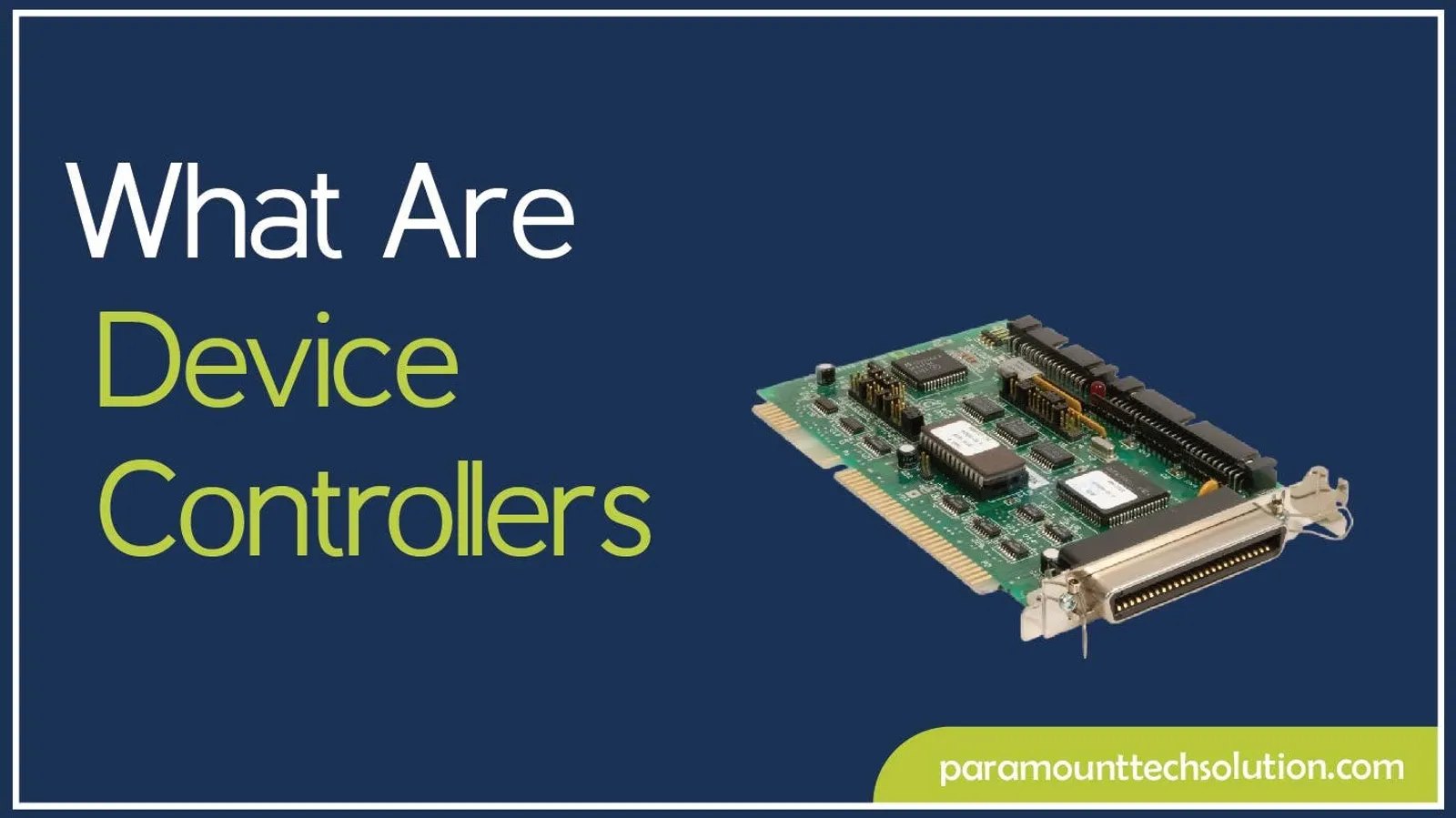What are Device Controllers
Paramount Tech Solution
Paramount Tech Solution

Have you ever thought about how your hardware communicates with software? The answer often lies in the device controller, which ensures proper functioning. It is a hardware component that manages and controls the communication with I/O devices, usually in the form of a chip embedded into the motherboard.
When these controllers are not updated, your PC may experience slowdowns, glitches, or security issues. Although updating the device controller requires updating the device driver, people may confuse the two terms and think they are the same, but the truth is different.
If you don’t know about device controllers, this blog provides a simple guide that will explain what they are, why they matter, their types, differences from device drivers, and how to update safely to improve performance and reliability.
The Device Controller provides a pathway between the CPU and the device, helping to decode operating system requests into simple instructions that hardware can execute.

Device controllers are classified into several types based on their purpose and function. All the types are given :
A device controller is usually built as a chip or circuit board and includes the following components:
It holds data temporarily during transfer between the CPU and the device.
It stores control commands i.e, read, write, etc.
Provides information about the current state of the device.
Temporary storage data so that the CPU and device can process it smoothly.
You are thinking that the device controller or the device drivers are the same. But that's not true. Here we clear it out.

If you want to understand device controllers more deeply, then here are the answers:
A hardware or software component that manages communication between the CPU and peripheral devices such as keyboard, storage drives, or graphics card.
In an electronic system, a controller is a circuit or system design to manage the operation of other components, e.g, a motor controller regulates the speed and direction of the motor.
A specialized chip or module that handles input/output operations. It manages how data flows between memory, CPU, and devices, e.g, disk controllers, network controllers.
Many operating systems and vendors provide applications that allow users to update controllers. These apps simplify the process of managing drivers, updating firmware, and troubleshooting device issues.
Example of Device controller apps :
Additional drivers (Ubuntu/Debian)
Radeon software for Linux, or an open source tool like solaar for Logitech devices.
Updating the device controller means updating the drivers (the software ), because you cannot directly update the physical controller hardware. So if your drivers stay updated, only then can they help the operating system to communicate with the device controller. You can update your drivers by following these methods :
Steps to update drivers through Device Manager are ;
Steps to update drivers from Windows updates are :
It is the safest and recommended method to download updates from their official sites. Steps are:
You can update the device controller in Windows 07. Steps are:
ON Mac, device controller updates usually come with system updates. Steps are :
On Linux, controllers are updated through kernel updates or a package manager.
Steps to update device controllers in Linux using the terminal (Ubuntu/Debian )are :
1s is used to show all files and folders in the current directory. For example, Type 1susb and run the command. Used for USB devices and the same controller.

1smod| grep <driver _name>

Type sudo apt update, it refreshes the repository and checks whether updates are available.

Type sudo apt upgrade

Type sudo apt dist-upgrade

A Device controller is critical for enabling the function between the CPU and peripheral devices. A device controller can control several I/O devices. In our blog,
We highlight all the topics deeply that can help you understand the device controller.
By following our instructions, you will be enable to update your device on different operating systems and make your device operate fastly.
What are device controllers in an OS?
The Device Controller provides a pathway between the CPU and the device, helping to decode operating system requests into simple instructions that hardware can execute.
Is it safe to update device controllers?
Yes, if you are downloading updates from trusted sources, then it is safe.
Can outdated controllers damage hardware?
Not usually, but they can cause devices to slow down or stop working.